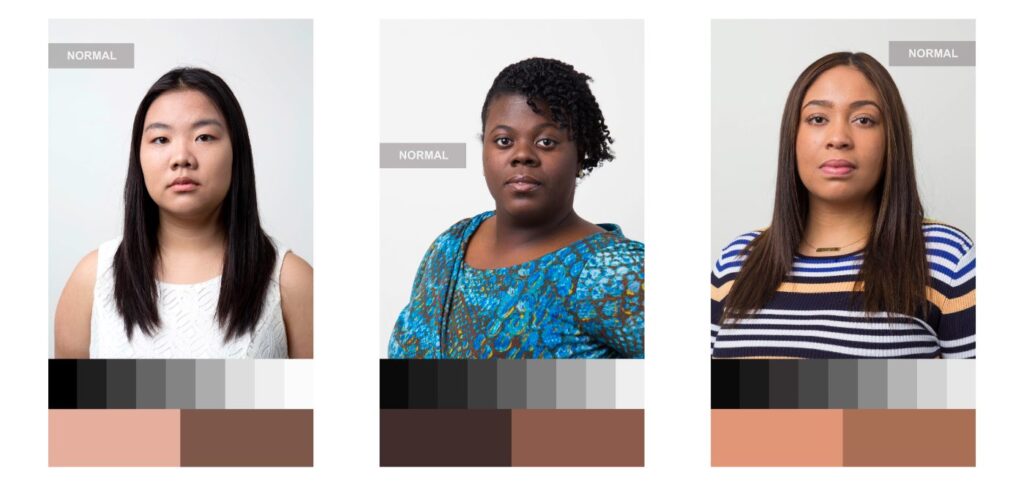Ann Nguyen

Ann Nguyen
exposing printing processing
APRIL 20 – MAY 15, 2017
Artist Statement
Identifying as both a photographer and a non-white person, I am sensitive to the merit and nuances of the photographic medium. I recognized its value as a tool I use to validate my physical presence amidst homogenized social spaces of my life. This high regard to the medium often conflicts with the sobering reality that photography can fall short of expectations to include those around me. I recognize moments when my black peers express discontent with physically inaccurate photographs of their presence – sometimes opting out of group photos to abandon the nuisance in managing the inadequate exposure of their skin in relation to their white counterparts. By exposing photographs of non-white individuals, printing images as a response to the production of the medium, and asking the viewer to process a shift in the current connotation and awareness of photographic accuracy, this exhibit – exposing printing processing – is an attempt to show the ways in which standardized photographic prints can present certain individuals in ways differently than how they see themselves.
The title of this exhibition comes from the front of the Kodak Color Dataguide, a popular manual for Kodak color 35 mm film distributed to commercial and professional photographers starting in the 1950s. Each of these kits contained extensive technical information needed to correctly expose, process, and print color photographs, including a standard negative and a 3 x 3.5 color photo card that served as point of reference for accurate color tones and densities.
Going back to the mid-1950s, these photo cards were named after a studio model who worked for Kodak, Shirley Page, and subsequent subjects for the “Shirley” shared another common feature – they were all white. The reality of Shirley Cards was that very few people saw them, but anyone appearing in Kodak color prints would be, often unconsciously, influenced by these standards. To assign such a norm, a baseline reference for the technological production of a certain aesthetic result, conversely implied that there was an “abnormal.” In this context, they were skin hues of non-white individuals, which fell outside the standard flash densities for appropriate “flesh tones.”
My work in this exhibition comprised of assertively large-scaled digital prints, responds to this important yet generally overlooked part of photographic history. Each work contains visual cues that connect it formally to the original set of Shirley Cards. By making a personalized 9-point grayscale and two color reference points actively acknowledging the unique skin tones for each individual who self-identified as a person of color, these works reclaim the technological intent of the Shirley Cards, rendering them functional for non-white subjects. These works explore the uncomfortable relationship between race and commercial photography – asking viewers and photographers to explore how seemingly objective photographic standards are susceptible to racial biases and how it can be a reflective response of the society that both created it and employed it.
About the Artist
Ann Thuy Nguyen is a photographer based in the Washington D.C area and North Carolina. Nguyen will graduate from Wake Forest University with a sociology and studio art double major, and with distinction as a Presidential Scholar in Visual Arts as well as a Dingledine Arts Scholar. Her sociological studies inspire her to think about the way that art, especially photography, operates in a socio-cultural context. Much of her work in this exhibit as well as in her artistic career is guided by her identity as a Vietnamese-American woman, forcing her to explore and acknowledge not only the intent but also the impact of the photographic medium in the everyday lives of people. Her work has been featured in Photographer’s Forum, FotoDC, and presented at the START Gallery for student exhibitions.
Reception
Thursday, April 20, 5-7 PM

